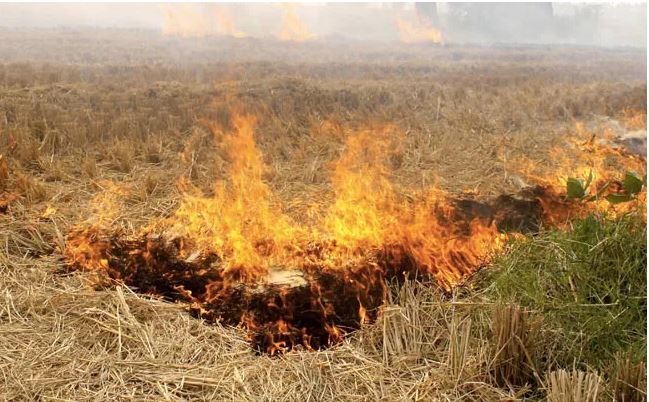
Despite the Punjab government’s claims to curb stubble burning, recent data from the Punjab Remote Sensing Centre (PRSC) reveals a 66% jump in farm fires from September 15 to October 2 compared to the same period last year.
On Monday alone, Punjab witnessed an additional 119 incidents of stubble burning, bringing the total count to 456, significantly higher than the 275 incidents recorded during the corresponding period last year, according to PRSC data.
Agriculture experts attribute this rise in stubble burning to a delay in harvesting short-duration paddy varieties due to September rains. The delayed sowing of vegetables compelled farmers in the Majha belt of the state to resort to burning even the waste of basmati residue to prevent losses.
The Majha belt, comprising districts such as Amritsar, Tarn Taran, and Gurdaspur, has contributed to 83% of the total 456 farm fire incidents observed until October 2 this year.
For the seventh consecutive day, Amritsar remained at the top of the list with 71 farm fire incidents, followed by Tarn Taran with 10 and Gurdaspur with one incident.
According to experts from Punjab Agriculture University (PAU), farm fires are primarily concentrated in Amritsar district, where short-duration varieties like Pusa 1509 basmati and non-basmati PR (parmal) 126 were sown. Normally, after harvesting in September, farmers in the Majha region, especially in Amritsar and Tarn Taran districts, transition to vegetable cultivation by the third week of September. However, untimely rains disrupted the harvest, forcing farmers to resort to stubble burning to clear their fields.
In a related trend, data from the Punjab Mandi Board reveals a notable increase in the arrival of non-basmati paddy varieties in state mandis until October 2. This year, 68,000 tonnes of non-basmati varieties have been recorded, compared to 42,000 tonnes during the same period last year, representing a 62% surge. This growth is attributed to the growing popularity of short-variety paddy, particularly the PR-126, aimed at replacing the water-intensive and long-duration PUSA 44 variety, according to state agriculture department officials. On October 2, farmers delivered 26,000 tonnes of paddy to mandis across 17 districts. Of the 68,000 tonnes received in mandis by 8 pm on Monday, government agencies and private parties purchased 16,000 tonnes and 9,500 tonnes, respectively.